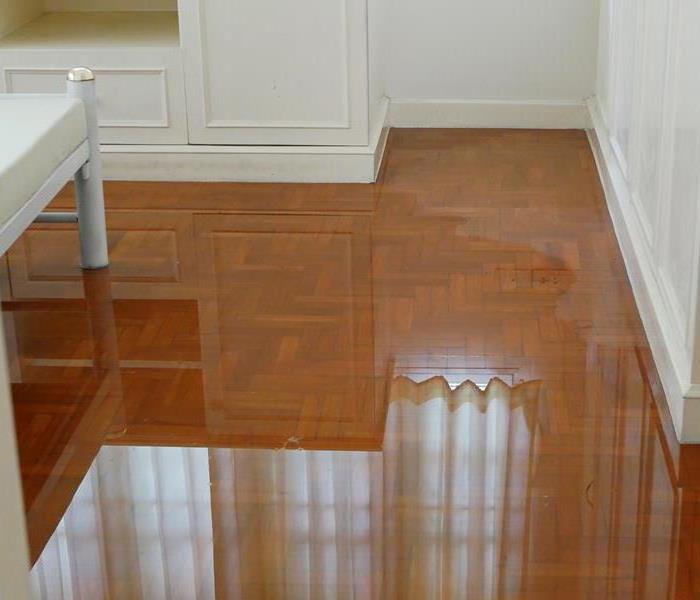How Is Water Restoration of My Stockton Home Different from Water Mitigation or Water Remediation?
7/16/2020 (Permalink)
The Full-Spectrum of Services Offered by SERVPRO to Local Homeowners Starts at Assessment and Ends with Your Stockton Water Damage Restored “Like it never even happened.”
A water loss in your Stockton home disrupts everything. Floors are slick, walls sometimes ”sweat,” ceilings can bulge, and an unpleasant and worrisome smell takes hold over a day or two if a response is lacking. The cause can be a burst pipe, a malfunctioning appliance, a poorly caulked tub, or a neglected gutter and downspout system, among dozens of other catastrophes a home can endure. An immediate response is critical because water begins damaging structural components and contents within minutes to hours, and the harm is progressive and cumulative.
Are There Best Practices Standards for Water Restoration?
When your Stockton home needs water restoration, experts suggest hiring a firm certified by the Institute of Inspection, Cleaning and Restoration Certification (IICRC). The IICRC develops international standards for the mitigation, remediation, and restoration of a broad range of household disasters. Mitigation is defined as the halting of water damage. Remediation involves cleanup and attempts to bring structures and contents back to preloss condition. Restoration can include the build-back of severely damaged structures. Each of the underlying standards is based on research, proven by successful outcomes achieved by legions of trained and certified Water Damage Restoration Technicians (WRT). Our crews are among the most highly qualified water damage restorers available.
What Difference Do Our Trained Technicians Make?
One of the most frustrating aspects of water damage is the difficulty of determining where all the moisture migrated. Because of our training and experience, we know that water often appears to disappear while it has crept through cracks and crevices, and wicked into highly permeable or porous materials. The SERVPRO team realizes that unless the water is traced and tracked, damage continues to accelerate, although perhaps unseen. Eventually, some or all of the following occur if we do not locate and remove the moisture:
- Wood framing swells, distorts, and weakens as the structure breaks down.
- Metal supports and fasteners tarnish and fail in their original purpose.
- Insulation packs down and loses its ability to maintain consistency in temperature.
- Hardwood and subfloors absorb water and warp -- cupping, crowning, and even buckling (coming loose).
- Drywall crumbles and lath and plaster breaks down.
- Mold spores in the atmosphere or on surfaces absorb water. They then use organic surfaces (wood, drywall) as a food source and incubator for multiplication as the organisms form destructive colonies.
How Do WRT-Certified Experts Find the Moisture?
The project manager first conducts a visual inspection, looking for evidence of water incursion that can be seen with the naked eye. Bulging ceilings or peeling paint on walls signal pooled-up water and potential safety hazards if the structures collapse. “Rolling” planks or strips of hardwood flooring indicate a wet subfloor, as do displaced ceramic or other tiles. Cabinets in the kitchen or bathroom might have doors that stick or shelves that pull away because of absorbed water and the subsequent swelling. We cannot rely solely on these signs, so we also employ tools to find and quantify the hidden and trapped water:
- Moisture detectors
- Moisture meters
- Infrared imaging
What Helps Release Hidden Water and Dry Out Wet Building Cavities?
If the water, standing or absorbed, is challenging to reach with conventional pumps and extractors, we consider controlled demolition techniques to access the fluids. Strategies include drilled holes, removal of beadboard and paneling, or flood cuts, where wall sections are sawed parallel to the floor several inches above the waterline. We suction liquid water with extractors, using wand extensions or hoses inserted into holes to reach into recesses. When we move on to the drying phase, we direct warm dry, pushing air into the cavities to enhance evaporation so that our dehumidifiers can capture the water vapor for disposal.
Now That My House Has Holes and Missing Walls Do I need to Hire a General Contractor?
Our construction division can manage any repairs, replacements, and rebuilding needed to complete the restoration. Streamlining all aspects of a water restoration through one licensed and certified company saves time and expense and reduces stress for you, the homeowner.
Be confident when you engage SERVPRO of Stockton for your water restoration project. We have the capacity and capability to take on everything needed from assessment through rebuilding, ensuring your home is back to preloss condition. Contact us day or night at (209) 477-3090 and receive our professional wrap-around services.






 24/7 Emergency Service
24/7 Emergency Service